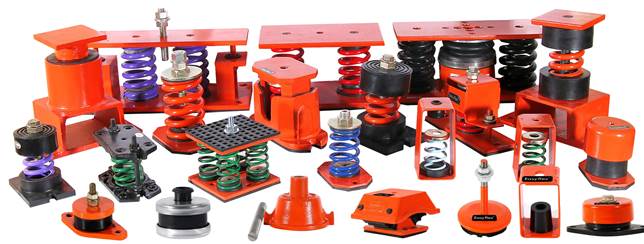
9 Tips to install vibration isolators
Vibration isolation is a critical element of many industrial processes, providing a way to protect equipment from damaging vibration and reduce noise pollution. Vibration is a force that transfers energy from one object to another and can be caused by a variety of sources including motors, pumps, and other running machinery. Vibration isolation attempts to limit the transfer of vibration from one object to another, essentially minimizing the disruption of vibration on delicate equipment and reducing noise pollution. The most common type of vibration isolation is a mechanical isolator. These isolators are typically made from rubber, springs, and other elastic materials, which absorb and dissipate the force of vibration. Mechanical isolators are often placed between the source of vibration and the equipment being protected, to absorb the vibration and reduce its impact. In addition to mechanical isolators, other vibration isolation solutions exist. One of the most advanced solutions is active vibration control, which uses sensors to detect vibration and then actively reduce it using active damping systems. Active vibration control is often used in industrial settings, where sensitive machinery and processes require the highest level of vibration reduction.
When selecting a vibration isolation solution, it’s important to consider the application and environment.
- Start by determining the type of vibration isolator that is best suited for your application.
- Measure the weight and size of the equipment that will be mounted on the vibration isolators.
- Select a vibration isolator with a load capacity that exceeds the weight of the equipment.
- Make sure the vibration isolator is compatible with the type of floor or surface it will be installed on.
- Clean the surface where the vibration isolator will be mounted.
- Align the vibration isolator with the equipment and secure it in place using the appropriate hardware.
- Tighten all bolts and nuts to the recommended torque specifications.
- Test the equipment to ensure that the vibration isolators are effectively reducing vibration.
- Inspect the vibration isolators regularly to ensure they are in good condition.
